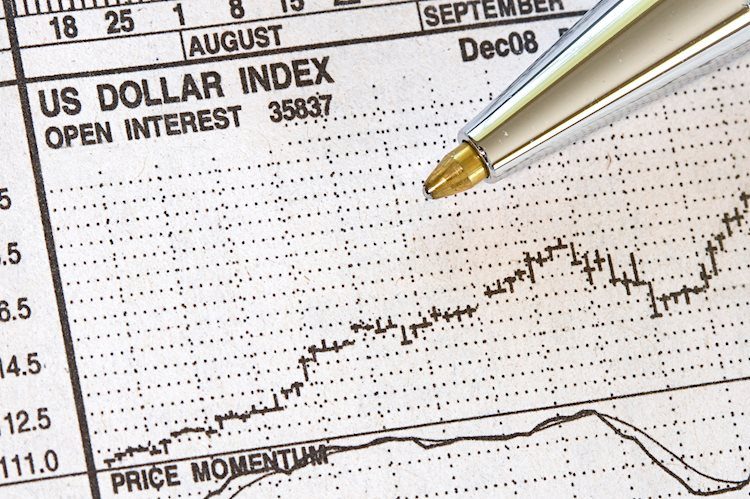The US Dollar bounced back on Monday from its decline last week after Federal Reserve Chair Jerome Powell made dovish remarks at the Jackson Hole Symposium. The US Dollar Index (DXY) recovered to around 101.00 after slipping due to Powell’s comments hinting at a shift toward a looser monetary policy stance by the Fed. This caused the 10-year US yield to drop below 3.8%, weighing on the USD.
Although the market is expecting aggressive easing by the Fed, the current economic growth exceeds expectations, leading to a disconnect between economic fundamentals and market pricing. Despite the positive economic indicators, there is uncertainty regarding the monetary policy direction, with investors eagerly anticipating further easing measures by the central bank in the coming months.
Market participants are closely following Powell’s remarks and predicting 100 basis points of easing by year-end, with a total of 200 basis points over the next 12 months. The odds of a 50 basis point rate cut in September stand at 30-35%, depending on incoming data. Investors are awaiting the release of the August NFP report and this Friday’s Personal Consumption Expenditures (PCE) figures for more guidance on the Fed’s future decisions.
On the technical side, the DXY index has found support at lower levels, with the RSI suggesting potential upward corrective movements. The MACD also indicates the possibility of bullish momentum building, although there are no clear signs of a reversal. Key support levels to watch are 100.50, 100.30, and 100.00, while resistance levels include 101.00, 101.50, and 101.80.
Central banks play a crucial role in maintaining price stability by adjusting their policy rates to control inflation or deflation. Major central banks like the Fed, ECB, and BoE aim to keep inflation close to 2%. By tweaking their benchmark interest rates, central banks influence borrowing and saving rates, leading to either monetary tightening or easing. Central banks are often politically independent, with policymakers falling into categories of ‘doves’ or ‘hawks’ based on their stance on inflation control and monetary policy.
Central bank policymakers, led by a chairman or president, work towards creating a consensus on monetary policy decisions during meetings. The chairman’s speeches and communication with the markets aim to avoid drastic changes in rates, equities, or currency values. Before policy meetings, members enter a blackout period to prevent public discussions on monetary policy. This careful communication and planning are crucial for the central bank’s effective implementation of monetary policy.











